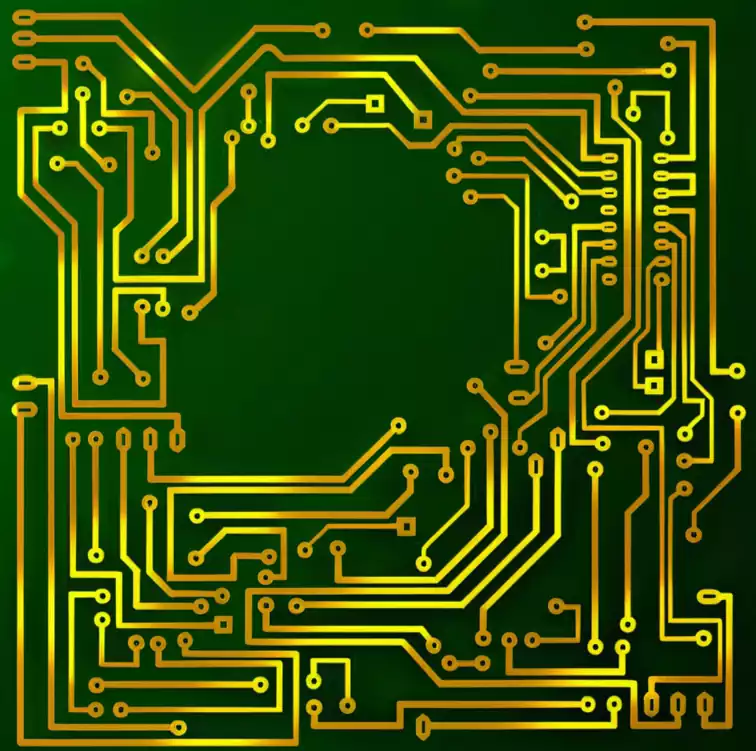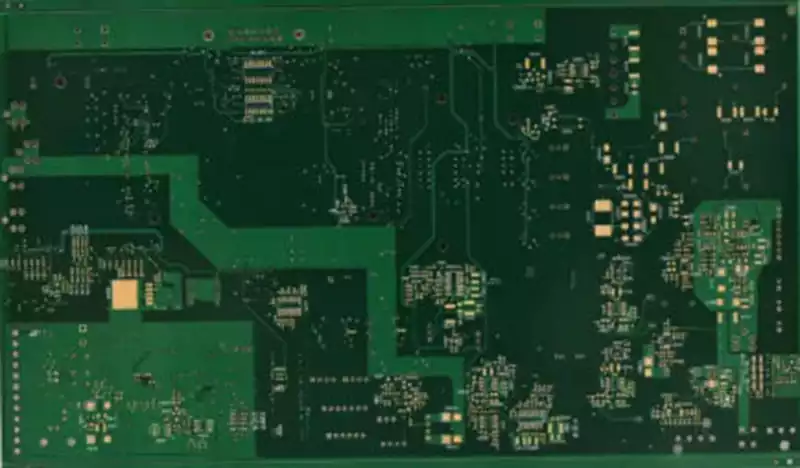Radar PCB is an RF circuit board used for detection and automation that is primarily responsible for generating, transmitting and receiving RF signals. It contains an antenna structure mounted on a high frequency laminate that transmits the radar flaps generated by the RF circuitry and receives the reflected radar pulses after hitting an object, which are then analysed by the RF circuitry.
Types of Radar PCB:
Doppler Radar PCB
As the name suggests, Doppler Radar PCB utilises the Doppler effect to calculate the speed of a target within a certain distance. As an object moves closer to a stationary observer, the frequency of the received wave becomes higher; conversely, as the object moves away from the observer, the wavelength becomes longer. The Doppler effect describes this frequency shift phenomenon. The radar transmits an electromagnetic signal to the target and determines the speed of the target by analysing the change in echo frequency. Doppler radar PCBs are commonly used for speed measurement and calibration.
Single Pulse Radar PCB
Single Pulse Radar PCB enables the acquisition of precise directional information about a target by means of additional radio signal coding. The technology is able to distinguish both the distance and direction of the target within a single signal pulse. Compared to cone-scanning radars, monopulse radar avoids measurement errors due to sudden variations in signal strength and increases immunity to interference. Since the 1960s, monopulse radars have been used in a variety of applications, including radio astronomy and electronic support systems. These radars can consist of reflectors, lenses or array antennas, and achieve high positioning accuracy by comparing the characteristics of detected signals. Unlike mono-pulse radar, cone scan radar PCB circuits are more common, and target location is usually determined by comparing measurements from the two techniques.
Passive Radar PCB
Passive radar PCB systems do not emit signals outward, but instead use signals reflected from non-cooperative sources already present in the environment (e.g., commercial broadcasts, communications signals) to detect and track targets. Passive radar systems, which include types of passive coherent positioning, passive surveillance, and covert radar, are a special form of dual-base radar that combines both collaborating and non-cooperating radar transmitters. Passive radar PCBs are primarily responsible for processing signals from the environment and also assist in target tracking once the detection task is complete.
Meteorological Radar PCB
Meteorological radar PCB supports the detection of wind speed and weather conditions through RF signals and are indispensable in modern weather monitoring. Due to air humidity, radar signals face a trade-off between signal attenuation and precipitation reflection during propagation. Dual-polarisation weather radar PCB technology is able to identify different types of precipitation patterns and analyse wind speeds in combination with Doppler shift for more accurate weather data collection.
Pulsed Radar PCB
Pulsed Radar PCB works by transmitting a high-frequency, high-intensity pulsed signal to a target and waiting for the echo to return in order to detect it. Using Doppler shift technology, Pulse Radar is able to determine the distance and resolution of the target. Specifically, the technique determines motion by recognising the characteristics of the returning signal:
Signals from stationary objects are superimposed on each other and cancelled on reflection;
Pulses returned by moving objects, on the other hand, exhibit phase differences.
This method is widely used in the detection and tracking of moving targets.

High-frequency radar refers to radars with a transmitting frequency between 3 and 30 GHz, which are generally divided into different frequency bands such as C-band, X-band, Ku-band and Ka-band. High-frequency radar is characterised by high resolution, high accuracy and high sensitivity, capable of detecting tiny targets, and suitable for application scenarios requiring high-precision detection, such as missile guidance, meteorological detection, marine monitoring and aviation radar.
Application fields of high frequency radar board in meteorological radar
Precipitation monitoring
High frequency radar pcb performs particularly well in precipitation monitoring. Compared with the traditional radar, which is difficult to distinguish between different precipitation intensities, high-frequency radar panels are able to accurately identify various types of precipitation, such as light rain, medium rain and heavy rain, by virtue of their excellent high-resolution capability. For example, in typhoon monitoring, HF radar panels are able to track the location and intensity of the eye of the typhoon in real time, providing key data support for disaster prevention and mitigation.
Wind Farm Monitoring
High-frequency radar panels also play an important role in wind farm monitoring. By analysing the reflection of high-frequency signals, weather radar can accurately measure changes in wind speed and direction. This is of great significance in areas such as aviation safety and wind power generation. For example, airport meteorological monitoring uses high-frequency radar panels to capture wind shear phenomena near runways in real time, effectively guaranteeing the safety of aircraft take-off and landing.
Cloud structure analysis
High-frequency radar panels can be used for detailed analysis of cloud structure. By studying the penetration characteristics of high-frequency signals, meteorological radar is able to obtain information on the vertical structure of clouds and water vapour distribution, which is of great value to cloud physics research and climate change analysis. For example, in artificial weather influence operations, high-frequency radar panels are used to determine the optimal operation time and area to enhance the effect of artificial rain enhancement.
Extreme Weather Warning
High-frequency radar panels are increasingly widely used in extreme weather warning. Its fast response and high precision advantages enable it to capture the generation and development of extreme weather such as tornadoes, hailstorms and thunderstorms in a timely manner. In the U.S. tornado warning system, high-frequency radar pcb has become an indispensable technical means for the early release of the warning for a valuable time.
As the core platform for RF signal generation, transmission and reception, radar pcb plays an irreplaceable role in meteorological fields such as precipitation monitoring, wind field measurement, cloud structure analysis and extreme weather warning. With the continuous development of technology, high-frequency radar PCB will continue to improve the accuracy and response speed of meteorological monitoring, providing a solid technical guarantee for weather forecasting and disaster warning.



